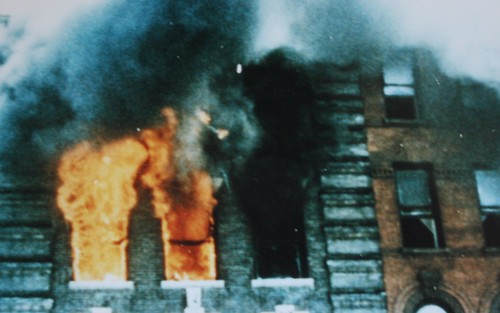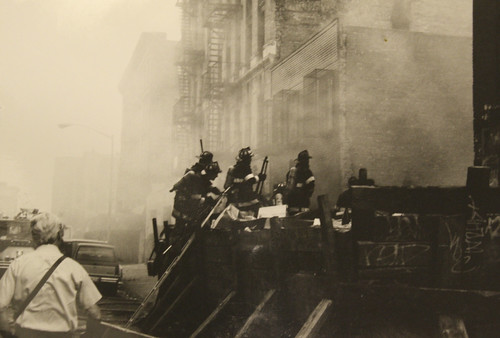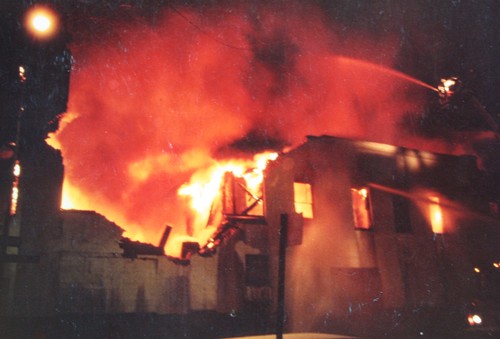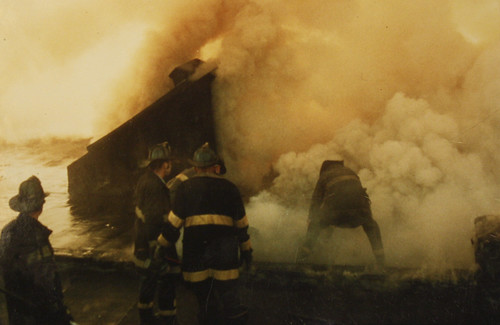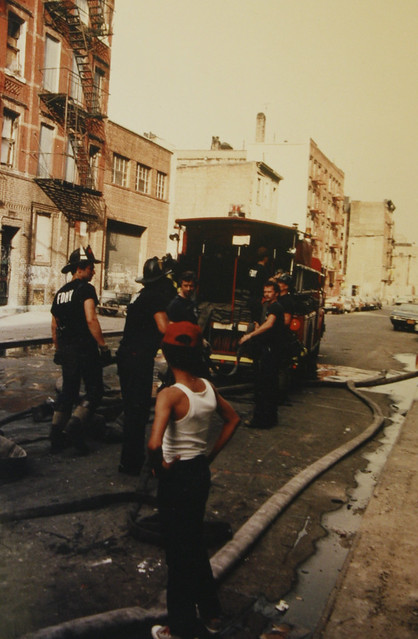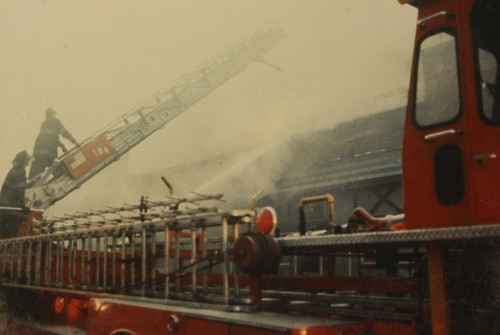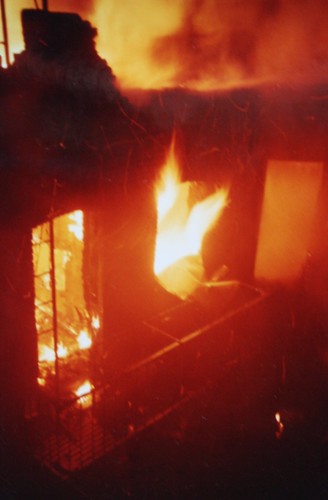Ralph Feldman, 76, was a fireman in the Bronx with Engine 45 for two decades, and then in Harlem with Engine 37 for several years. Before retiring about 26 years ago, he served as a fire marshal intermittently. In 1969, he bought a building at 315 East Eighth Street and in the 1970s and ’80s he photographed fires near there, sometimes giving a hand to his fellow firefighters.
On his block of mostly vacant buildings, there were as many as five fires a week, said Mr. Feldman. “At the same time when the Bronx was burning, the East Village was burning,” he said. “All of Brooklyn was burning. In the ’70s and ’80s, big portions of the city burnt down.” Mr. Feldman spoke with The Local about his photos.
East Eighth Street, 1970s. This was a vacant building. Most of these fires were in vacant buildings. They were started by squatters or people who were living there and would start a fire to keep warm. The fire would get out of hand and they would leave the building. They didn’t put the fire out. Some of the squatters weren’t what you think of as squatters today. They were middle-class kids that were living down here. Not that they were homeless; they all had places in the suburbs. The squatters that were homeless, most of them were drug addicts.
302 East Eighth Street, 1970s. This was also across the street from me. [The fire] was a whole floor and the roof. Usually the fires were on the top floor. I think it was because there were more squatters upstairs. This building looks occupied because the ladder company is making a rescue. They carry different equipment today. One time, it was against the rules for some reason to wear suspenders.
I used to have a beard in the fire department, and when they came out with the [new] masks (it had to be around the 1970s), they made me shave the beard. It was an excuse; they didn’t want beards, anyhow. You can see there’s a fireman in the building without a mask. Guys who worked in the hook and ladders didn’t wear masks.
East 11th Street, 1980s. This was at night. It was an empty building. It was a big fire. You can see they have a tower ladder. There must have been about 50 firemen. It looks like a third-alarm fire. I can tell by the size of the fire. I think the building ended up getting torn down after that.
East Eighth Street, 1970s. This fire was started by some kids who lived on Ninth Street. It was an empty building. It was started I think on the second floor and went through the building. That’s why they’re cutting the roof. They put it out – thank God, because my building was right next door. I was scared I was going to lose the building. I took this from the roof of my building. I helped stretch the hose from the fire truck, so I was [later] in the street.
306 East Eighth Street, 1970s. This fire was in the summer – these guys are in T-shirts. Every company made their own T-shirts. This truck here, you rode by standing on the rear platform, holding on to a railing. There was no inside compartment to sit in. This is what the trucks were like in the 70s.
East Eighth Street, 1970s. This is a hook and ladder. They were different. They had a tiller, where there’s a guy [at the] rear of the truck. I don’t think they have these today at all. There used to be at least five guys in the truck, but Bloomberg cut it down to four. This was a fire in another empty building. Those days, you used to stand on a running board and hold on to the truck. When they had the riots, people were throwing rocks at firemen. That’s when they started coming out with the trucks that were enclosed and you would ride inside the truck. This one in particular, you rode outside the truck in the ’70s.
East Ninth Street, 1980s. This fire took one apartment on the top floor. The building’s been redone. Those are very old buildings from around 1870. There was a shaftway to the rear yard. There used to be stables. There was a passageway through the building where horses and carriages could go. It’s still there, but it’s sealed up. They had stables in the rear, but they’re gone now.
Ralph Feldman is a community contributor. He is also a sculptor and painter, and his sculpture of firefighters who died in the 23rd Street Fire on Oct. 17, 1966 is on permanent display at the Cathedral Church of Saint John The Divine.



